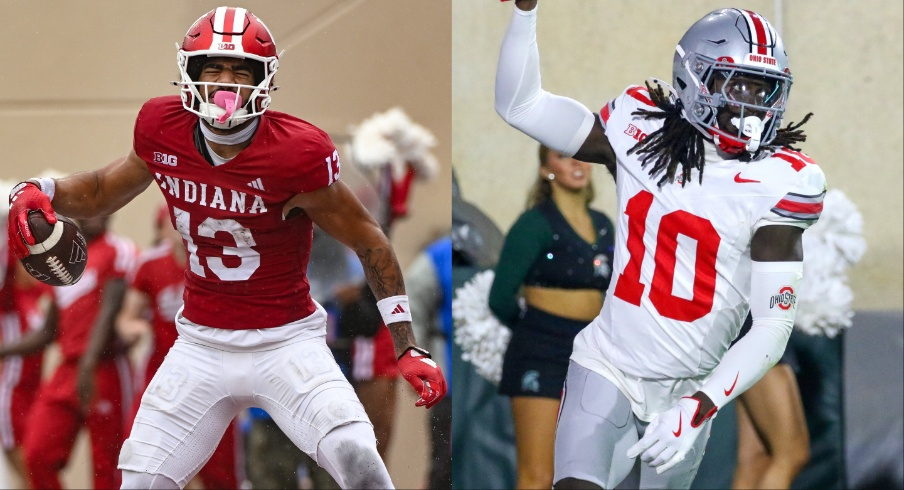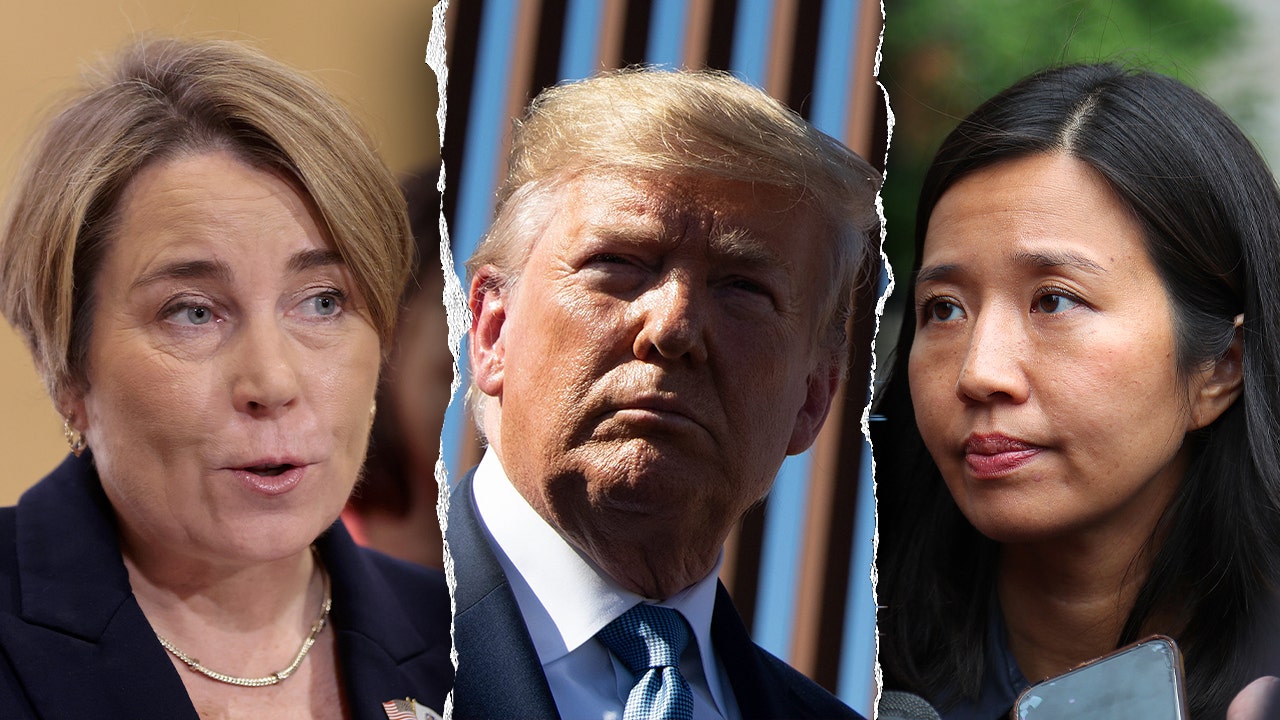Finance
The Best Personal Finance Software for 2023

Is Connecting an App to Your Bank Accounts Safe?
Many personal finance apps support online connections to your financial institutions. Such apps download lists of transactions and other account data from your bank accounts, credit card accounts, brokerages, and other financial institutions so that you can see all the activity neatly in one place. To connect, you typically enter your login credentials for those financial sites, though you usually have to provide additional security information—which is, of course, a good thing.
The personal finance apps we reviewed all employ robust security protocols. The ones that connect to your financial accounts use encryption and other safety measures to protect your login information. Many use third parties, such as Plaid, to make secure connections. However, you must also do your part to make the experience safe.
Three key things you can do are:
- Use a unique username and password for your financial logins and the personal finance app. A password manager is the tool you’ll want to use here.
- Enable multi-factor authentication wherever it’s supported—again, for logging into the personal finance app and any connected bank accounts. Yes, it takes some extra time, but not nearly as much time as reconstructing your financial life if you’re the victim of identity theft.
- Keep all your personal details, such as your date and city of birth, private because they can be used as authenticators to access financial data and accounts.
Brushing up on the best practices for preventing identity theft is always a good idea.
What Can You Do With a Personal Finance App?
After importing a batch of transactions from credit cards and bank accounts into a personal finance app, most people spend some time cleaning up the data. Transactions need to be correctly categorized for their type of income (salary, freelance payment, and interest, for example) or expenses (food, mortgage, utilities, and so on). Most apps guess the categories, but you can always change them and split transactions among different categories. So, if you go to one store and buy dog food and a new lamp, you can categorize the correct amounts as pet care and home furnishings.
If you’re conscientious about categorizing your income and spending, the apps will make charts and reports that accurately summarize where your money comes from and where it goes. This information is crucial for budgeting as well as when tax preparation time rolls around.
Depending on the personal finance app, you might be able to add tags to transactions, too. That way, you can search for transactions that are related in other ways. For example, you might make a tag called tax-deductible, which gives you an easy way to pull up all your tax-deductible expenses at the end of the year. Rocket Money includes an option for this designation in its transaction details.
Some personal finance apps let you add notes and attach files. If you bought something with cash, though, your bank won’t have a record of it. In those circumstances, you can manually create a transaction. The best personal finance app for this kind of transaction management is Quicken Deluxe.
Seeing a list of all transactions across all your accounts in a personal finance app lets you see it as you can see it as soon as you log in. The sooner you catch an unauthorized transaction, the quicker you can alert your bank and cut off access to the account.
Get an Overview of Your Financial Situation
Every personal finance service we review shows you a dashboard when you log in. Sometimes, the dashboard is the only page you need to see because it shows the most pertinent information about your financial situation, such as your account balances and pending bills.

Charts and graphs on the dashboard tell you, for example, your income versus spending and how you’re doing with your budget. You may be able to set financial goals and gauge your progress at meeting them, as well as see updates on your investment portfolio if markets are open.
Basically, this overview shows you snippets and highlights of the data analysis these apps do behind the scenes, with options to dive deeper. Click a checking account balance in Mint, for example, and it takes you to the transaction list for that account. Click your credit score in Credit Karma to learn what contributes to it and how it’s recently changed. In short, the dashboard of your personal finance app gives you a quick look at your money situation and is a springboard to deeper financial study.
Learn How to Budget
Being conscientious about your finances includes minimizing your expenses so that they are lower than your income. That’s the goal, anyway, and personal finance apps help you achieve it through budgeting.
The mechanics of creating a workable budget are much easier than the process of specifying your limits. It’s often guesswork until you’ve had a budget for several months and start to see how your money comes and goes. For that reason, Quicken Deluxe and some other personal finance apps let you use past income and expenses as models. That way, you can answer the question, “How much do I usually spend each month?” and get an answer that relies on past data.
Mint does budgeting a little bit differently. In Mint, budgets come from your spending categories. You select a category, choose a frequency (for example, every month), and enter an amount. How much do you want to spend every month on your car? What about groceries? The site shows you how well you’re adhering to each budget with a series of colored horizontal bars that show where your spending is currently, compared with your budgeted amount for the given time period. Green means you’re doing OK, and red means you’ve gone over your self-imposed limit. You can tweak each budget as you learn more about your spending habits by clicking the up and down arrows.

Quicken Deluxe considers a budget to be a comprehensive table that contains all categories. The software also lets you view your budgets by a variety of time periods, like monthly and annually. And it has tools to help automate your data entry.
Set Your Financial Goals
Setting goals, such as establishing an emergency fund, isn’t rocket science. With a personal finance app, you specify the amount you’re trying to save and the target date for achieving it, and the application tells you how much you have to save every month to meet your goals. Some sites do more. NerdWallet, for example, lets you link your goals to the appropriate spending account, so your progress is automatically tracked.
Limited Big-Picture Planning
Most personal finance apps do not focus on the theory and implementation of retirement planning, much less lifetime financial planning. Quicken Deluxe, though, has tools to help you pay off your debts faster, plan for taxes, and establish a comprehensive lifetime financial plan.
Does Personal Finance Software Help You Pay Bills?
Of the applications we review, only Quicken offers online bill pay, but it charges a monthly fee for it if you have the Deluxe version.
Other applications let you record bills and bill payments, though you have to make the payments elsewhere. But at least that way, you can include the cost of your bills in your personal finance picture. Mint and Quicken Deluxe are especially good at this. You can set up automatic connections to online billers (Xcel Energy or Verizon, for example) or enter offline bills from suppliers who don’t bill you electronically, such as a dog walker or babysitter. The site alerts you when they’re due to be paid and lets you record payments manually.
Can Personal Finance Apps Boost Your Credit Score?
An excellent credit score is gold. Beyond helping you get approved for a credit card, mortgage, car loan, and so on, it helps minimize the interest rate you pay. It’s important to know not only what your credit score is at any given time but also how it gets calculated and what you can do to improve it.
Credit Karma, Credit Sesame, NerdWallet, and WalletHub—all free—do this. Credit Karma is especially comprehensive and efficient in this regard. It pulls your credit score daily from two of the three major bureaus and gives you access to your credit reports. It also explains how different factors contribute to your credit score and what you can do to try and boost it.
One of the ways you can improve your credit score is to use financial products—credit cards, mortgages—that have attractive interest rates and other benefits, making it easier for you to pay off debt as quickly as possible. Credit Karma, Credit Sesame, NerdWallet, and WalletHub help pay for the services they provide by displaying occasional ads for products that might appeal to you based on your credit profile. You can also browse marketplaces for additional candidates.
Be warned, however, that frequently canceling credit cards and acquiring new ones affects your credit score. Still, it’s good to learn about these suggested products so that when the time comes, you know the best options.
Do Personal Finance Apps Know Your Net Worth?
Do personal finance apps know your net worth? Well, it depends on how much you tell them. You may only want to use a personal finance service for day-to-day income and expense management, budgeting, and goal setting. In that case, you don’t need to tell the app about other assets and funds you have, whether it’s a trust fund or a property. If there’s an account you don’t want to be reflected in your app, just leave it out.
Mint, Quicken Deluxe, and a few others let you input your assets, including properties, vehicles, and investment holdings, which contribute to your net worth. If you keep your financial data and assets updated and connect the app to all your financial accounts (including accounts in debt), you get a running tally that reflects your total net worth.
Manage Your Money on the Go
You probably don’t need advanced money management tools when you’re away from your desktop or laptop. But when you’re out spending money, you do need to know how much you have available.
All the personal finance services reviewed here are available as mobile apps. Most offer somewhat reduced functionality, but you can at least check your account balances, view transactions, add transactions, and see graphs related to your spending and income. You may also be able to get your credit score and check the status of pending bills.
What Is the Best Free Personal Finance App?
The majority of personal finance apps are free or have a free tier of service. Mint stands out as the best. The app now does have a paid tier of service with a few features behind a paywall, but the free version is excellent for most people. The app makes money by showing you targeted ads for financial products like credit cards, though they aren’t as intrusive as they used to be. For 99 cents per month, you can get rid of the ads. At $4.99 per month, Mint Premium includes features that, frankly, most people could live without, such as a subscription cancellation service and advanced data visualization.
NerdWallet is another totally free app worth mentioning. It combines bank account imports and transaction management with stronger credit score content than Mint. It also has an incredible amount of editorial content (including tutorials) on personal finance topics. NerdWallet is supported in part by ads for financial products, but they don’t get in the way. The app also tracks your net worth and cash flow as long as you connect to all your online financial accounts. It does show you your credit score and explain how it came to be, although Credit Karma (also totally free) does a better job here.
Pick the Best Personal Finance App for You
Which personal finance app is best? It depends on what you need at the moment. If you don’t want to pay anything for a personal finance app and you want overviews of nearly everything related to your finances, Mint is best. If you want an excruciatingly detailed picture of your money and financial health, plus some of the best tools for managing investments, Quicken Deluxe is best. If you want to understand and improve your credit score, you’ll probably want to use Credit Karma or NerdWallet. And if you want the best overall user experience that features the basics as well as some innovative tracking tools, try Editors’ Choice Simplifi by Quicken.

Finance
Cop29: $250bn climate finance offer from rich world an insult, critics say

Developing countries have reacted angrily to an offer of $250bn in finance from the rich world – considerably less than they are demanding – to help them tackle the climate crisis.
The offer was contained in the draft text of an agreement published on Friday afternoon at the Cop29 climate summit in Azerbaijan, where talks are likely to carry on past a 6pm deadline.
Juan Carlos Monterrey Gómez, Panama’s climate envoy, told the Guardian: “This is definitely not enough. What we need is at least $5tn a year, but what we have asked for is just $1.3tn. That is 1% of global GDP. That should not be too much when you’re talking about saving the planet we all live on.”
He said $250bn divided among all the developing countries in need amounted to very little. “It comes to nothing when you split it. We have bills in the billions to pay after droughts and flooding. What the heck will $250bn do? It won’t put us on a path to 1.5C. More like 3C.”
According to the new text of a deal, developing countries would receive a total of at least $1.3tn a year in climate finance by 2035, which is in line with the demands most submitted before this two-week conference. That would be made up of the $250bn from developed countries, plus other sources of finance including private investment.
Poor nations wanted much more of the headline finance to come directly from rich countries, preferably in the form of grants rather than loans.
Civil society groups criticised the offer, variously describing it as “a joke”, “an embarrassment”, “an insult”, and the global north “playing poker with people’s lives”.
Mohamed Adow, a co-founder of Power Shift Africa, a thinktank, said: “Our expectations were low, but this is a slap in the face. No developing country will fall for this. It’s not clear what kind of trick the presidency is trying to pull. They’ve already disappointed everyone, but they have now angered and offended the developing world.”
The $250bn figure is significantly lower than the $300bn-a-year offer that some developed countries were mulling at the talks, to the Guardian’s knowledge.
The offer from developed countries, funded from their national budgets and overseas aid, is supposed to form the inner core of a “layered” finance settlement, accompanied by a middle layer of new forms of finance such as new taxes on fossil fuels and high-carbon activities, carbon trading and “innovative” forms of finance; and an outermost layer of investment from the private sector, into projects such as solar and windfarms.
These layers would add up to $1.3tn a year, which is the amount that economists have calculated is needed in external finance for developing countries to tackle the climate crisis. Many activists have demanded more: figures of $5tn or $7tn a year have been put forward by some groups, based on the historical responsibilities of developed countries for causing the climate crisis.
after newsletter promotion
This latest text is the second from an increasingly embattled Cop presidency. Azerbaijan was widely criticised for its first draft on Thursday.
There will now be further negotiations among countries and possibly a new or several new iterations of this draft text.
Avinash Persaud, a former adviser to the Barbados prime minister, Mia Mottley, and now an adviser to the president of the Inter-American Bank, said: “There is no deal to come out of Baku that will not leave a bad taste in everyone’s mouth, but we are within sight of a landing zone for the first time all year.”
Finance
US Treasury Selects BNY as Financial Agent for Direct Express Program | PYMNTS.com
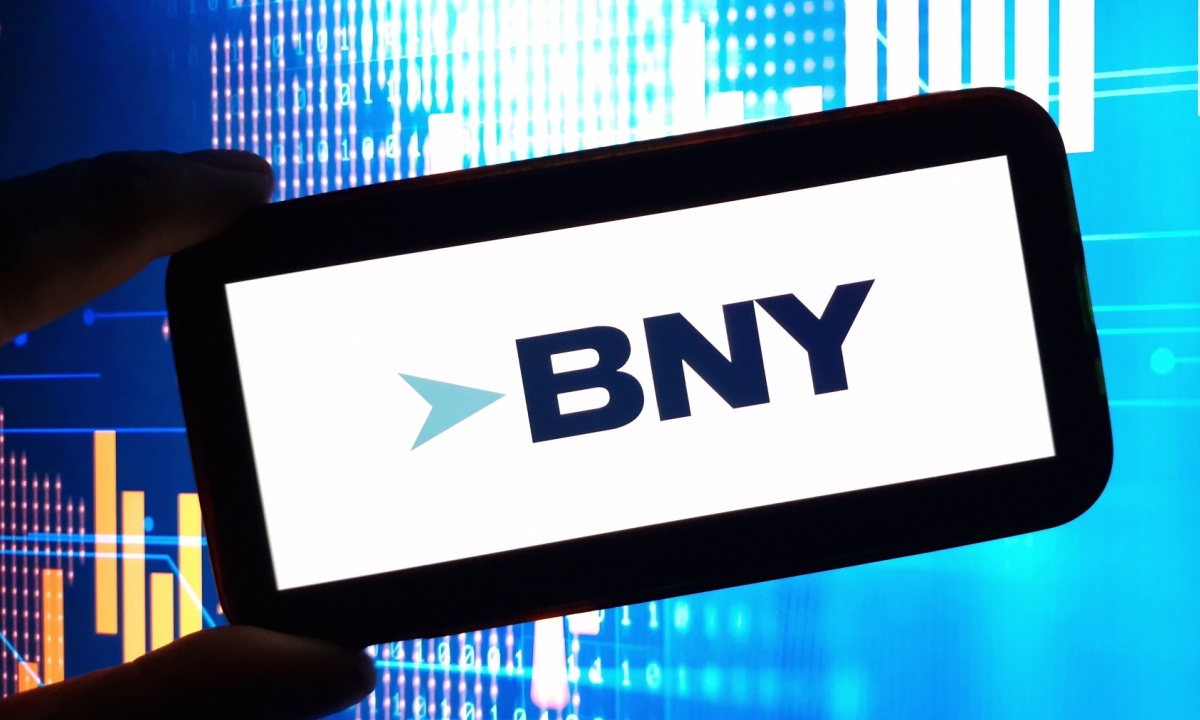
The Bank of New York Mellon (BNY) will serve as the financial agent for the Direct Express program, which provides 3.4 million Americans with a prepaid debit card to receive monthly federal benefits.
The U.S. Department of the Treasury’s Bureau of the Fiscal Service said in a Thursday (Nov. 21) press release that it selected BNY for this role after evaluating proposals from multiple financial institutions and seeing the bank’s offering of features and customer service options.
The new agreement will begin Jan. 3 and will last five years, according to the release.
“Since 2008, the Direct Express program has paid federal beneficiaries seamlessly, inclusively and securely, while sparing taxpayers and customers the costs and risk associated with cashing paper checks,” Fiscal Service Commissioner Tim Gribben said in the release. “This new agreement will further our goals of delivering a modern customer experience and strengthening Treasury’s commitment to paying the right person, in the right amount, at the right time.”
With this agreement, BNY will add to the cardholder experience features like online/digital funds access, bill pay, cardless ATM access, omnichannel chat and text customer service, online dispute filing and in-person authentication options, the bank said in a Thursday press release.
“Drawing on our leading platform capabilities, we look forward to advancing the program’s goal of providing high-quality financial services to individuals and communities throughout the U.S.,” Jennifer Barker, global head of treasury services and depositary receipts at BNY, said in the release.
Seventy-seven percent of the recipients of disbursements opt for instant payments when given the option, according to the PYMNTS Intelligence and Ingo Payments collaboration, “Measuring Consumers’ Growing Interest in Instant Payouts.”
That’s because consumers looking for disbursements — paychecks, government payments, insurance settlements, investment earnings — want their money quickly, the report found.
In October, the Treasury Department credited the Office of Payment Integrity, within the Bureau of the Fiscal Service, with enhancing its fraud prevention capabilities and expanding offerings to new and existing customers.
The department said its “technology and data-driven” approach allowed it to prevent and recover more than $4 billion in fraud and improper payments, up from $652 million in 2023.
Finance
Islamic finance: a powerful solution for climate action – Greenpeace International
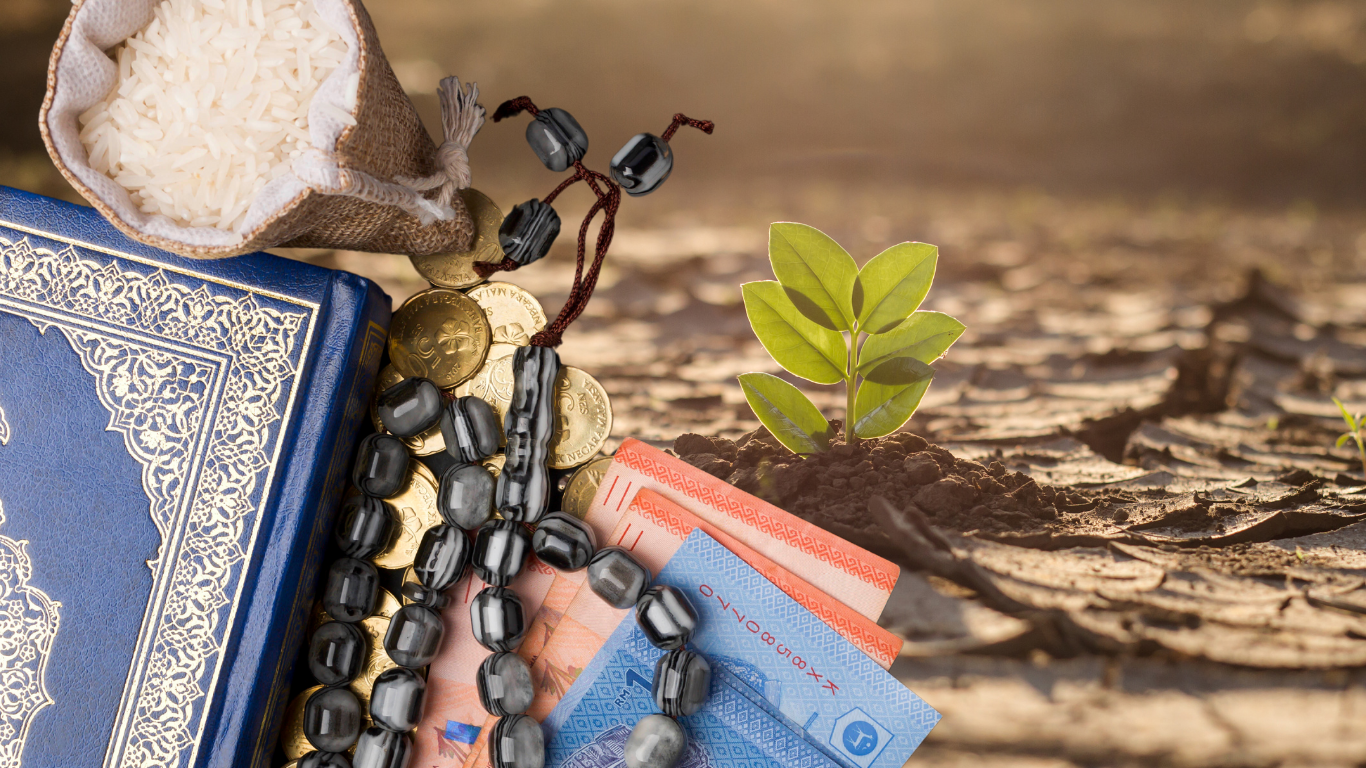
Across the globe, Muslim communities find themselves disproportionately affected by climate change, with extreme weather events, rising food insecurity, and other climate impacts taking a toll on their livelihoods, cultural practices, and spiritual life.
In the last few years, devastating floods swept through Pakistan, affecting millions, displacing thousands, and leaving entire communities struggling to rebuild. In Indonesia, one of the world’s most populous Muslim-majority countries, rising sea levels threaten to submerge coastal villages and erode vital agricultural lands. Meanwhile, in parts of the Middle East and North Africa, persistent droughts and water scarcity are increasing pressures on already fragile ecosystems and economies.
The climate crisis is having a profound impact on the daily lives and religious practices of millions of people
These climate pressures extend beyond immediate threats to survival. Climate change has also begun affecting food security in Muslim-majority regions, especially during Ramadan, a holy month where fasting is practised from dawn until dusk. In communities already grappling with the impacts of droughts or floods, maintaining food stocks for Ramadan can become a significant challenge. In Somalia, where cycles of drought and flash floods have eroded food systems, many families are forced to navigate long-standing shortages, with climate-induced shocks compounding existing vulnerabilities.
Food insecurity is a worsening crisis as global warming affects harvests, disrupts fisheries, and drives up food prices, making the observance of Ramadan particularly strenuous, both physically and economically. This brings climate change into the daily lives and religious practices of millions in profound ways, reminding us that the climate crisis is as much a social and economic issue as it is an environmental one.
Islamic finance: a financial system grounded in ethical responsibility
Islamic finance has been operating in the global financial system for decades, providing an ethical foundation rooted in Islamic principles that promote fairness, social responsibility, and environmental stewardship.
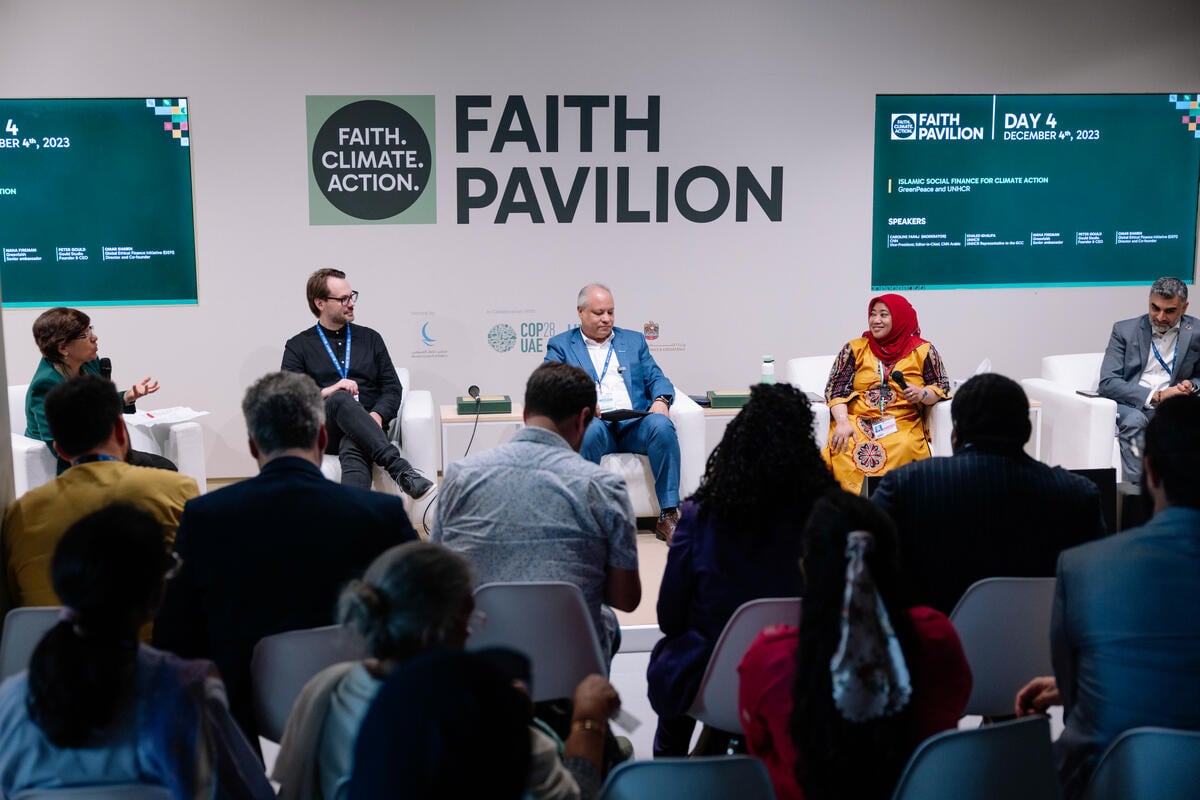
Ethical banking is a core pillar of Islamic finance. Through principles like zakat (charity) and waqf (endowment for public good), Islamic finance encourages financial activity that uplifts communities, supports sustainable projects, and avoids investments in industries harmful to people and the planet.
Many Islamic financial institutions in countries like Malaysia, the United Arab Emirates, and Saudi Arabia already support projects aimed at protecting the environment and enhancing social welfare. Success stories are already emerging. Malaysia’s green sukuk initiative has mobilised billions for renewable energy projects, while the UAE’s recent US$3.9 billion in green sukuk issuance demonstrates growing momentum. Saudi Arabia’s Vision 2030 has allocated US$50 billion for renewable initiatives, targeting an emissions reduction of 278 million tons by 2030.
A US$400 billion opportunity for climate action
While Islamic finance principles already provide a framework that aligns well with sustainability, there is still much room to strengthen its role in addressing the climate crisis, enhancing resilience in vulnerable communities, and shifting investments towards clean, renewable energy.
A new report by Greenpeace Middle East & North Africa (MENA) (as part of the Ummah For Earth Alliance) and the Global Ethical Finance Initiative (GEFI), highlights the transformative potential of Islamic finance in accelerating the global transition to renewable energy and addressing the triple planetary crisis: climate change, pollution, and biodiversity loss.
The report shows that the Islamic finance industry continues its robust expansion, with assets projected to reach USD$ 6.7 trillion by 2027, and that a strategic allocation of just 5% toward renewable energy and energy efficiency initiatives could mobilise approximately USD$ 400 billion by 2030 – a transformative sum for climate-vulnerable regions.
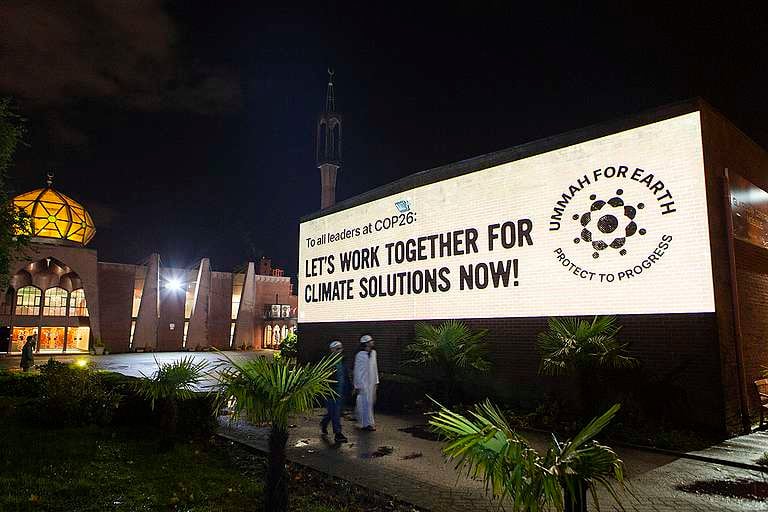
Islamic finance can help foster climate-resilient infrastructure, restore and protect biodiversity, and finance climate adaptation projects in at-risk communities. By explicitly directing funds away from fossil fuels and into green energy projects, Islamic financial institutions like the Islamic Development Bank (IsDB) can lead by example, especially in regions that are both vulnerable to climate impacts and hold significant influence in the global fossil fuel market. These institutions must accelerate their commitment to renewable energy investments.
As climate impacts intensify, Islamic finance offers a bridge between faith-based values and practical climate solutions. The convergence of Islamic finance and climate action represents more than a financial opportunity – it’s a moral imperative aligned with Islamic principles of environmental stewardship (khalifah) and balance (mizan).
Islamic finance, grounded in ethical principles and community responsibility, has a unique role to play in the global climate movement, particularly in the Global South. For millions across the globe, this form of finance offers a culturally relevant and powerful instrument to not only protect their communities from the worsening climate crisis but to promote environmental and economic sustainability in ways that align with their beliefs. Islamic finance offers a bridge between economic strength and ethical stewardship, creating pathways toward a more equitable and sustainable world for all.
Your voice can transform Islamic fiance
Ask your Islamic bank to support increasing investments in renewable energy!
Take action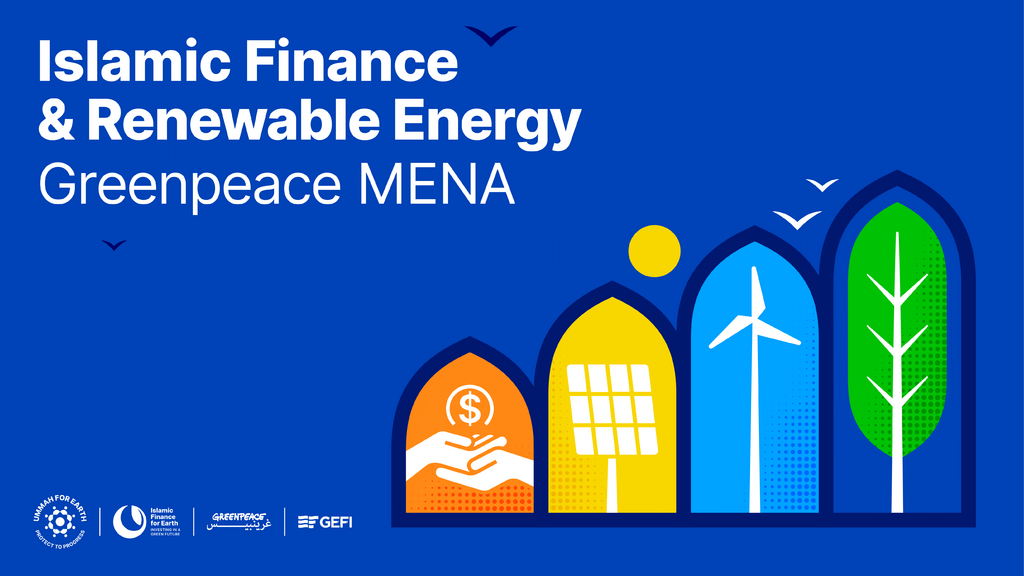
-
Business1 week ago
Column: OpenAI just scored a huge victory in a copyright case … or did it?
-

 Health1 week ago
Health1 week agoBird flu leaves teen in critical condition after country's first reported case
-

 Business5 days ago
Business5 days agoColumn: Molly White's message for journalists going freelance — be ready for the pitfalls
-
World1 week ago
Sarah Palin, NY Times Have Explored Settlement, as Judge Sets Defamation Retrial
-

 Science3 days ago
Science3 days agoTrump nominates Dr. Oz to head Medicare and Medicaid and help take on 'illness industrial complex'
-

 Politics4 days ago
Politics4 days agoTrump taps FCC member Brendan Carr to lead agency: 'Warrior for Free Speech'
-
/cdn.vox-cdn.com/uploads/chorus_asset/file/25739950/247386_Elon_Musk_Open_AI_CVirginia.jpg)
/cdn.vox-cdn.com/uploads/chorus_asset/file/25739950/247386_Elon_Musk_Open_AI_CVirginia.jpg) Technology4 days ago
Technology4 days agoInside Elon Musk’s messy breakup with OpenAI
-

 Lifestyle5 days ago
Lifestyle5 days agoSome in the U.S. farm industry are alarmed by Trump's embrace of RFK Jr. and tariffs






